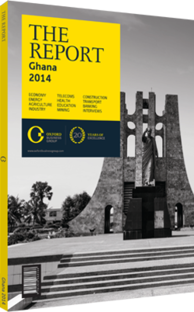OBG talks to Frederik Hsu, Deputy Chairman, NMS Infrastructure

Interview: Frederik Hsu
How challenging is the financing of large-scale social infrastructure projects in emerging markets?
FREDERIK HSU: From our point of view, access to funding has not been the most pressing problem. Indeed, despite short-term uncertainty, there is still considerable appetite for bankable infrastructure projects. For our contract with the Ministry of Health (MoH), Barclays was commended by the Government of Ghana for structuring one of the country’s most competitive infrastructure financing plans, with long-term rates of less than 4% over 13 years. More challenging for us has been the availability of export credit agency (ECA) cover.
The ECAs have country limits that are determined by demand, market conditions and risk appetite. Demand for infrastructure investment easily outstrips the supply of ECA coverage, so investors need to consider alternative funding. However, an element of caution is being exercised, because of market conditions. While sovereign credit risk re-ratings have altered the financing environment in the short term, the longer term outlook is positive. Certain panel banks may hesitate to make offers, but there are many prepared to step in and take on debt. In terms of collaborative financing models, there is a push for public-private partnerships, emulating European countries. However, the push for this is misplaced, given that the experience in Europe has proven to be extraordinarily expensive for the public. It may appear to offer an easy way of getting a facility without debt, but the total through-life costs tend to be higher. For some market segments, it may not be the right course. Joint ventures with European or West African firms are more interesting, like that between Zenith Hygiene Group and Zenith Hygiene Ghana to create a hub servicing public and private sector customers.
How can the operational sustainability of new health care infrastructure best be maintained?
HSU: Foreign developers in emerging markets often adopt complex new equipment and, after a very short period of time, find it is not working. That is because the engineering experience required to maintain the equipment has yet to be embedded locally. For its hospital construction contract with the MoH, NMS is providing three years post-handover technical support, training and maintenance, to ensure operational sustainability. Local operators will be trained by approved engineers to embed skills and transfer capability into local health care provision. It is all part of delivering a customer-driven solution and not merely building something, signing off and walking away.
A cultural shift is necessary to make preventive maintenance mainstream in Ghana. Having invested in new equipment, it is vitally important that it delivers benefits. Another important focus is having ready supplies of consumables, so that there is no interruption when they are required. It reflects a need to plan beyond routine maintenance and look at the entire supply chain to make sure that it works properly in the future.
To what extent do you see scope for new builds as opposed to existing facility upgrades?
HSU: Unless space or location are an issue, it is usually quicker, easier and cheaper to design and construct a new facility. This has added advantages like being able to avoid compromising on design and adopting the latest principles. Unlike hospitals built according to European specifications, for example, new builds can be designed specifically for use in the context of Ghana. There are many advantages in erecting new builds, but these tend to be in the design and construction phases, rather than during operation. The challenge with upgrading facilities is avoiding compromised designs and higher construction costs. With regards to health care infrastructure, to upgrade the clinical buildings within a hospital facility would be hugely expensive and result in a sub-optimal clinical layout. Older units were built when the design concepts and the delivery of health care were different from modern methods. Working around existing operations can be tricky, especially when there is limited capacity for relocation.
You have reached the limit of premium articles you can view for free.
Choose from the options below to purchase print or digital editions of our Reports. You can also purchase a website subscription giving you unlimited access to all of our Reports online for 12 months.
If you have already purchased this Report or have a website subscription, please login to continue.

